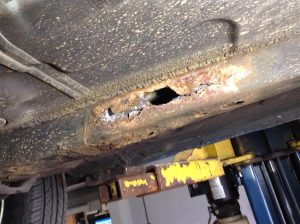We are OPEN!
We are remaining open during the COVID-19 pandemic as we service a wide variety of vehicles in which our community relies on including emergency and delivery vehicles.
Please know we have extended our PICK-UP and DELIVERY service to all customers to help minimize the impact and provide peace of mind!
Call us today at 413-314-2423 or click the link below to schedule your vehicle! For more details on our efforts to combat COVID-19, check out our letter by visiting this post: https://rb.gy/qvxbgw
 If your car has it, you’re probably not happy about it. When left untreated a rust spot can quickly grow to cause major structural problems. In many states, a car with rust holes in the body won’t even pass inspection, regardless where the spots are located or how small they are.
Tha's why it’s best to deal with the problem as soon as you spot it. Understanding the rusting process, the chronically problematic areas, and the ways to address trouble are crucial to repairing rust before it’s a serious issue. In this first article, we’ll discuss the types of rust and what causes them.
If your car has it, you’re probably not happy about it. When left untreated a rust spot can quickly grow to cause major structural problems. In many states, a car with rust holes in the body won’t even pass inspection, regardless where the spots are located or how small they are.
Tha's why it’s best to deal with the problem as soon as you spot it. Understanding the rusting process, the chronically problematic areas, and the ways to address trouble are crucial to repairing rust before it’s a serious issue. In this first article, we’ll discuss the types of rust and what causes them.
